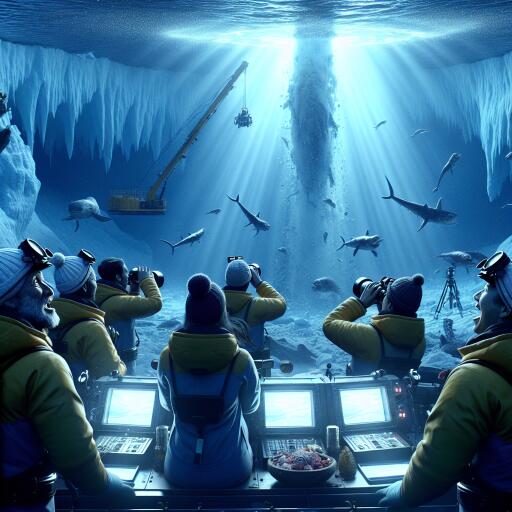
Researchers Stunned by Discovery During Deep-Sea Exploration off Coast of Arctic Islands: ‘I Couldn’t Really Believe It’
An innovative initiative has been bridging the gap between marine scientists and remote locations through an unexpected collaboration. By partnering with yacht owners, this program has enabled researchers to embark on voyages to unexplored territories. One such expedition to Svalbard, a Norwegian archipelago in the Arctic Ocean, yielded surprising results.
During this notable journey, Paige Maroni, a postdoctoral research fellow from the University of Western Australia, unveiled an astonishing level of biodiversity on the Arctic seafloor. Contrary to her initial expectations of an inhospitable environment due to the freezing temperatures, Maroni encountered a thriving underwater ecosystem.
“I couldn’t really believe it, to be honest — even on the first dive when we arrived on the seafloor, we landed on this red coral garden that was teeming with urchins and scallops,” Maroni shared. “We just saw so many insane colors and so much life immediately: walls of anemones, like a beautiful flower garden; brittle stars (like a starfish but more predatory); red coral habitats; kelp forests; tube worm and sponge gardens.”
This captivating discovery underscores the importance of deep-sea research and its potential impact on our understanding of marine ecosystems. The vibrant and diverse life forms Maroni encountered go a long way in illustrating the hidden beauty and resilience of nature in extreme conditions.
However, it is essential to acknowledge the broader environmental context associated with yachting. Most yachts today rely heavily on non-renewable energy sources, contributing significantly to global air pollution. Superyachts, in particular, have been documented to produce more greenhouse gases annually than some small countries.
In his book, Superyachts: Luxury, Tranquility and Ecocide, social scientist Gregory Salle critiques this phenomenon, highlighting how superyachts symbolize the ability of the wealthiest individuals to sidestep the environmental and social costs of their behaviors.
The yacht that facilitated Maroni’s expedition was a regular yacht, which, while still responsible for considerable pollution, is less impactful than a superyacht. Nevertheless, this prompts a contemplation on the environmental cost of such ventures.
Despite these concerns, the silver lining lies in the valuable data obtained from such research trips. Increased understanding of oceanic life and biodiversity could drive better protection measures for our marine environments. It poses a paradox: while the means of transportation may contribute to the problem, the knowledge gained from these explorations could be key to mitigating the very threats yachts help exacerbate.
The findings from Maroni’s journey to Svalbard provide a glimpse into the rich, yet fragile, ecosystems that inhabit the Arctic depths. Such insights not only deepen our appreciation of the natural world but also emphasize the urgency of addressing pollution and protecting these vital habitats.
The hope is that with continued exploration and mindful practices, the scientific community can leverage these discoveries to foster more sustainable interactions with our planet’s oceans.





Leave a Reply